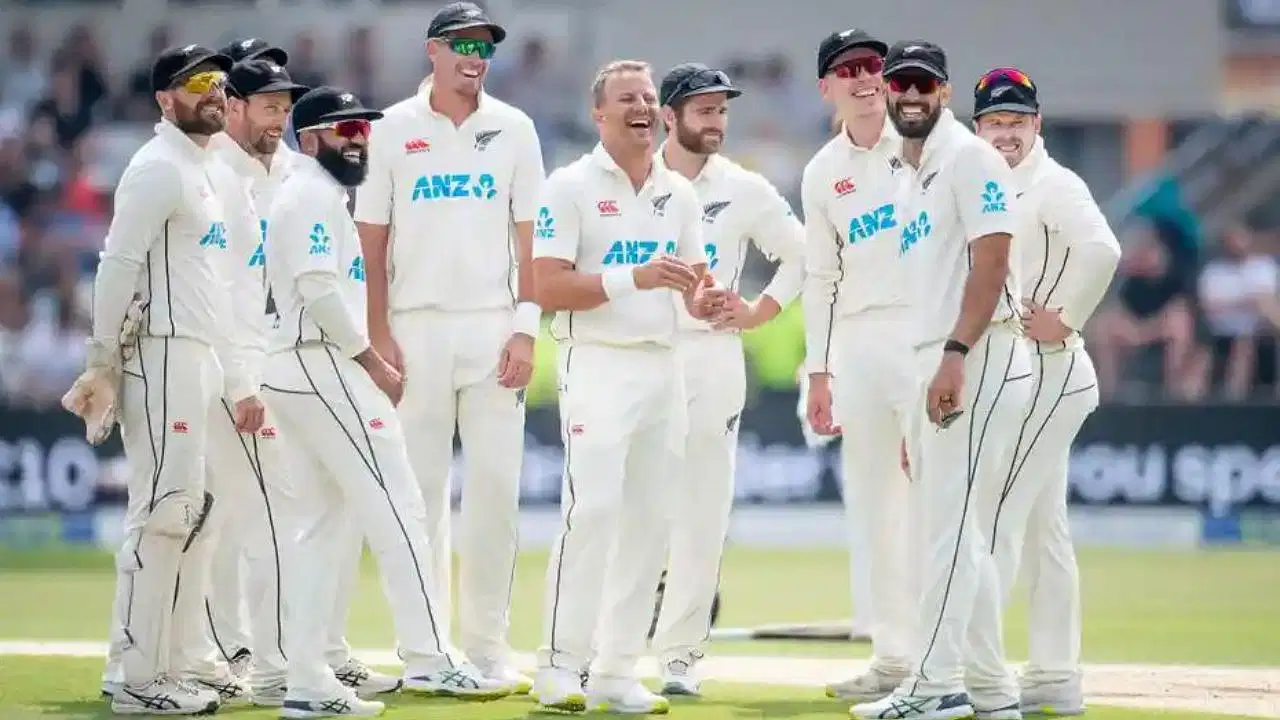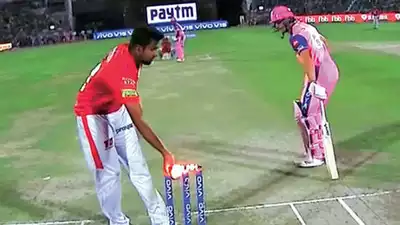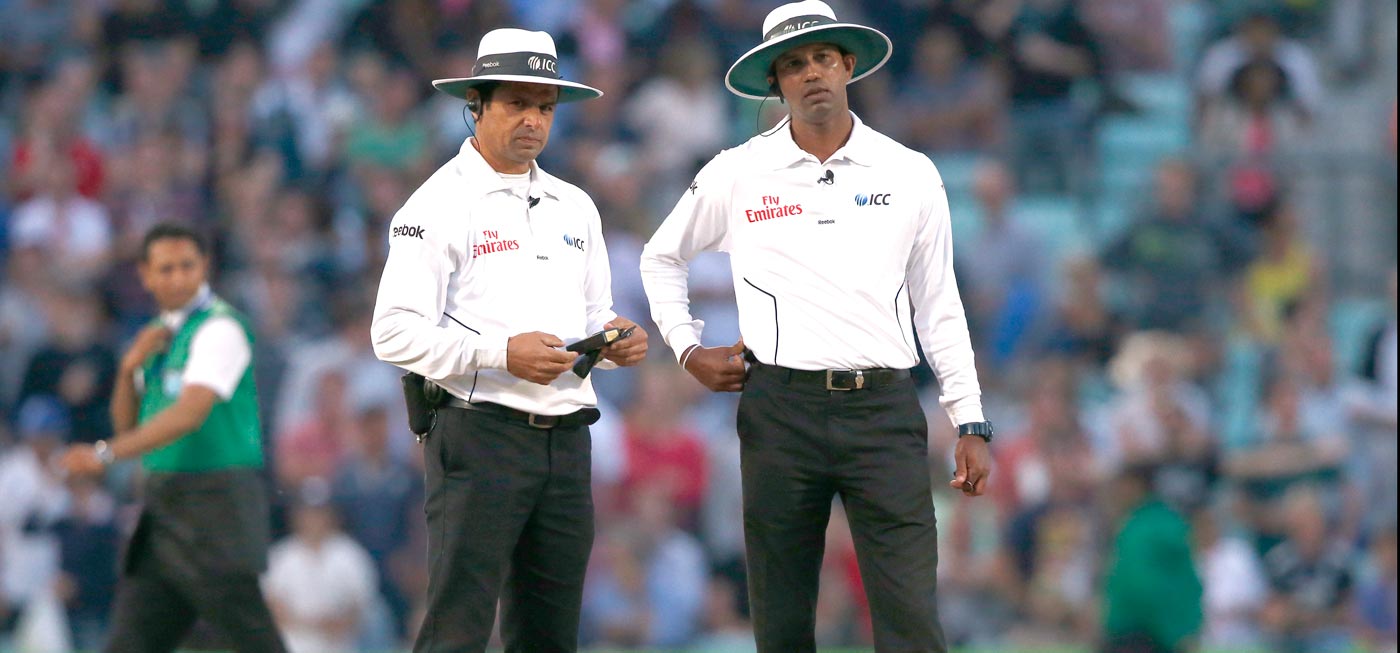18.1 Scoring Runs
In cricket, players earn runs, which represent the primary unit of scoring, as follows:
18.1.1 The batter earns a run whenever they successfully cross the pitch, covering the distance from one end to the other while the ball remains in play.
18.1.2 A boundary shot results in runs. (Consult Law 19 for boundary rules.)
18.1.3 Runs are earned when Penalty runs are awarded. (See Law 18.6 for details.)
18.2 Runs Not Allowed and Unscored Runs
In these Laws, whenever a team scores run or incurs penalties, these runs and penalties may be subject to disallowance or non-scoring.
In disallowed run situations, there’s a one-run penalty for No balls or Wides, plus 5-runs penalties, except for Law 28.3 (pertaining to fielding side helmets).
18.3 Short Run
A run is deemed short when a batter fails to complete their run by not reaching the crease at the other end.
While a short run impacts the subsequent run, if the latter is completed, it is not considered short. A striker can initiate the first run from in front of the popping crease without penalty.
18.4 Unintentional Short Run
Unless Law 18.5 specifies otherwise, the following rules apply:
18.4.1 If either batter runs a short run, the umpire will promptly call and signal “Short run” when the ball becomes dead, and the umpire will not count that run.
18.4.2 If one or both batters run short and score a boundary, the umpire will only disregard the short running if the boundary results from an overthrow or a fielder’s willful act (see Law 19.8).
18.4.3 When both batters run short during the same run, the umpire treats it as a single short run.
18.4.4 If more than one run falls short, following Laws 18.4.2 and 18.4.3, none of the short runs will be scored.
18.4.5 If there are multiple short runs, the umpire will inform the scorers of the number of runs to record.
18.5 Deliberate Short Run
18.5.1 If either umpire believes that one or both batters intentionally ran short at their end, they will call and signal “Short run” when the ball is dead, and then apply 18.5.2.
18.5.2 The bowler’s end umpire will:
Disallow all runs to the batting side
Return any not-out batter to its original end
Signal “No ball” or “Wide” to the scorers if applicable, and reiterate the “Short run” signal to the scorers
Award 5 Penalty runs to the fielding side
Award any other 5-run Penalty if applicable, except for Penalty runs under Law 28.3 (related to protective helmets belonging to the fielding side)
Inform the scorers of the number of runs to be recorded
Inform the captain of the fielding side and, as soon as possible, the captain of the batting side regarding the reason for this action.
18.5.3 The umpires will report this occurrence to the Executive of the offending side and the relevant Governing Body after the match for appropriate action against the captain, individuals involved, and the team.
18.6 Runs Awarded for Penalties
Law 18.5 awards runs for penalties, along with Laws 21 (No ball), 22 (Wide ball), 24.4 (Player returning without permission), 26.4 (Penalties for contravention), 28.2 (Fielding the ball), 28.3 (Protective helmets belonging to the fielding side), 41 (Unfair play), and 42 (Players’ conduct). Note the restrictions on awarding Penalty run under Law 18.5 and Laws 23.3 (Leg byes not to be awarded), 25.7 (Restriction on the striker’s runner), 28.3 (Protective helmets belonging to the fielding side), 34 (Hit the ball twice), 41.14 (Batter damaging the pitch), and 41.15 (Striker in protected area).
18.7 Runs Scored for Boundaries
Runs are earned for boundary allowances, as per Law 19 (Boundaries).
18.8 Runs Scored When a Batter Is Dismissed
When a batter is dismissed, any run is awarded as a penalty stand. No additional runs are credited to the batting side, except in the following scenarios:
18.8.1 If a batter is dismissed Obstructing the field, the batting side also scores any completed runs before the offense. However, if the obstruction prevented a catch, only penalties are scored.
18.8.2 If a batter is dismissed Run out, the batting side also scores any completed run before the wicket is put down. But if a striker with a runner is run out under Law 25.6.5, runs completed by the runner and the other batter are not counted.
18.9 Runs Scored When the Ball Becomes Dead (Other Than at a Wicket Fall)
When the ball becomes dead for any reason other than a wicket falling, or when an umpire calls it dead, both sides count the run awarded as penalties. However, refer to Laws 23.3 (Leg byes not to be awarded) and 28.3 (Protective helmets belonging to the fielding side) for specific provisions.
Additionally, the batting side is credited with:
All runs completed by the batter before the incident or call of “Dead ball”
The run in progress if the batter had already crossed at the instant of the incident or call of “Dead ball.” Note the provisions of Law 41.5.8 (Deliberate distraction, deception, or obstruction of a batter).
18.10 Crediting of Runs Scored
Unless stated otherwise in any of the Laws:
18.10.1 When the bat strikes the ball, the striker earns all the runs scored by the batting side. There is one exception: Record 5 Penalty runs separately, and note the one-run penalty for a No ball as a No ball extra.
18.10.2 When the bat misses, the run comes as Penalty run, Byes, Leg byes, No ball extras, or Wides. No ball Byes/Leg byes: 1 run.
18.10.3 The bowler is debited with:
All runs scored by the striker
All runs scored as No ball extras
Runs scored as Wides.
18.11 Batter Returning to Original End
Dismissal under Law 25.6.4 or 25.6.5 (Dismissal and conduct of a batter and their runner)
Bowled
Stumped
Hit the ball twice
LBW
Hit wicket
Caught
Obstructing the field, where the obstruction doesn’t prevent the striker from being caught.
18.11.2 The batter returns to their original ends.
A boundary is scored
The umpires disallow run for any reason.
The batter decides to do so under Law 41.5 (Deliberate distraction, deception, or obstruction of a batter).
18.12 Batter Returning to Wicket They Left
18.12.1 When a batter dismisses the not-out batter batter returns to the wicket they left, provided they hadn’t already crossed when the incident causing the dismissal occurred. If the umpire disallows a run, the not-out batter returns to their original end. These circumstances include:
Obstructing the field, where the batter’s action doesn’t prevent the fielding side from catching the striker.
Run out, except under Law 25.6.4 or 25.6.5 (Dismissal and conduct of a batter and their runner).
18.12.2 If, during a run, the ball becomes dead for any reason other than a batter’s dismissal, the batter returns to the wickets they left only if they hadn’t crossed when the ball became dead. However, if any of the circumstances from 18.11.2.1 to 18.11.2.3 apply, the batter returns to their original ends.



